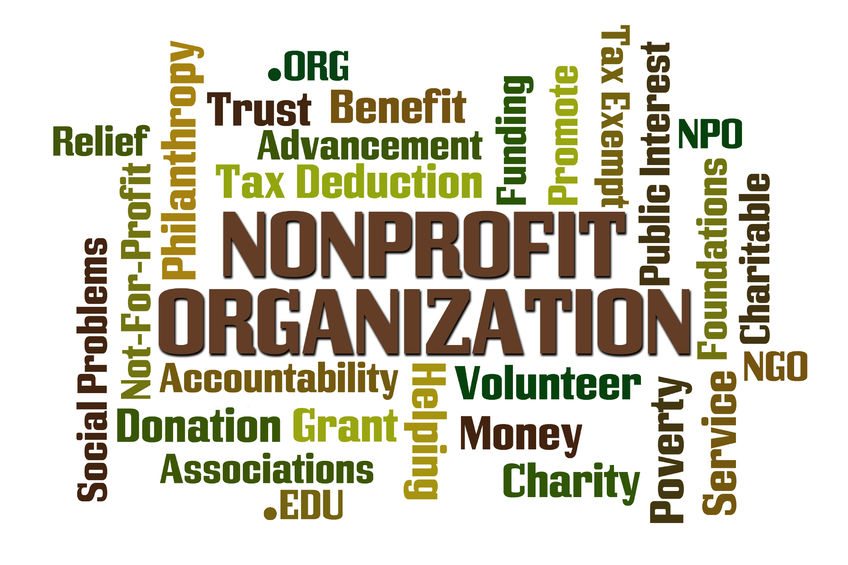Nonprofit Firm: Encouraging Organizations to Drive Social Adjustment
Nonprofit Firm: Encouraging Organizations to Drive Social Adjustment
Blog Article
Discovering the Diverse Features and Responsibilities of a Nonprofit Company in Addressing Social Issues and Promoting Modification
Nonprofit companies serve as vital agents of modification within society, taking on a myriad of social concerns through diverse approaches. Their duties expand past plain solution provision; they involve in advocacy, source mobilization, and community outreach, typically acting as a bridge between vital services and marginalized populations.
Understanding Nonprofit Company Roles
The efficiency of nonprofit firms rests on a clear understanding of their varied duties within society. These companies function as vital intermediaries in between the public, personal, and governmental industries, addressing various social problems and supporting for adjustment. Not-for-profit agencies commonly operate as service suppliers, delivering essential programs and sources to underserved populations. This role is vital in filling gaps that may exist in civil services, ensuring that at risk groups have access to needed support.
Furthermore, nonprofits play a necessary duty in advocacy, increasing recognition and affecting plan choices that affect their areas. By participating in study and public education, these organizations assist shape public discourse and promote educated decision-making - nonprofit agency. They likewise act as systems for volunteerism, setting in motion neighborhood members to add their time and abilities toward cumulative objectives
In addition, nonprofit firms typically act as conveners, combining varied stakeholders to promote partnership and cumulative effect. This collective method improves their capacity to address facility social problems effectively. Recognizing these multifaceted roles is critical for maximizing the capacity of nonprofit firms in creating lasting social adjustment and improving overall neighborhood wellness.
Area Involvement and Outreach
Effective community involvement and outreach are fundamental parts of nonprofit firms' techniques to promote connections and develop trust fund within the communities they serve. These efforts concentrate on understanding area demands, advertising awareness of offered sources, and encouraging engagement in programs made to address social problems. Not-for-profit companies employ a variety of approaches to engage with area members, such as workshops, informative sessions, and collaborative events.
Outreach campaigns offer to enhance connections with varied populations, especially marginalized groups who may face barriers to accessibility. By utilizing culturally appropriate interaction approaches and leveraging neighborhood partnerships, nonprofits can enhance their visibility and show their commitment to neighborhood empowerment. This strategy not only cultivates a sense of belonging yet also boosts the chance of sustained interaction.
Furthermore, efficient area involvement goes past mere involvement; it includes proactively paying attention to community participants' feedback and including their understandings right into program advancement. This collaborative process makes sure that the solutions supplied are receptive, relevant, and customized to the unique difficulties faced by the community. Eventually, promoting solid connections via involvement and outreach can cause more impactful interventions and a better collective effort towards promoting positive social change.
Advocacy and Plan Influence
Campaigning for acts as an important system for nonprofit firms to influence public policy and drive systemic modification. By leveraging their know-how and community insights, these companies can successfully stand for marginalized populations and address pressing social problems. Nonprofits take part in campaigning for with numerous methods, including public awareness projects, grassroots mobilization, union building, and straight lobbying of policymakers.
Via these efforts, not-for-profit agencies aim to shape legislation and policy structures that line up with their goal and the requirements of the neighborhoods they offer. They perform study, gather information, and share compelling stories to highlight the necessity of particular issues, ensuring that decision-makers are notified and encouraged to act. This process not only intensifies the voices of those Recommended Site impacted by social injustices yet also fosters a much more inclusive and equitable policymaking environment.
In addition, advocacy initiatives typically look for to develop long-term architectural adjustments, resolving origin instead of merely alleviating symptoms. By focusing on policy influence, not-for-profit firms add to a wider understanding of social challenges and promote services that can lead to lasting enhancements in societal well-being. Ultimately, campaigning for is fundamental to the transformative additional resources function nonprofits play in creating a simply and equitable culture.
Fundraising and Source Management
Not-for-profit firms count on robust fundraising and source administration strategies to support their campaigning for efforts and maintain their objectives. By employing a multi-faceted method, nonprofits can alleviate the risks associated with reliance on a solitary financing resource.
Resource administration is similarly critical, as it entails the calculated allocation of both monetary and human resources to maximize effect. Nonprofits have to create budgets that align with their objectives while making sure openness and accountability to stakeholders. This involves routine monitoring of expenses and changing techniques as required to optimize resource use.

Cooperation and Partnerships
While numerous organizations seek their missions individually, collaboration and collaborations can dramatically improve the efficiency of not-for-profit firms. By interacting with other nonprofits, federal government entities, and personal market companies, nonprofits can pool resources, share know-how, and intensify their effect on social problems. Joint efforts commonly lead to ingenious services that might not be achievable individually, leveraging the toughness of each companion to address intricate obstacles.

Eventually, reliable partnership requires clear communication, shared goals, and common regard amongst companions. By accepting a participating method, not-for-profit companies can produce sustainable networks that not just address instant social concerns but also add to lasting systemic adjustment, fostering a more Resources equitable culture. Via partnership, nonprofits can grow and maximize their potential for purposeful effect.
Final Thought
Not-for-profit agencies offer as vital entities in addressing social concerns and cultivating adjustment within neighborhoods. Ultimately, the diverse duties of not-for-profit companies significantly add to the search of social justice and the renovation of community wellness.
Comprehending these multifaceted roles is critical for making best use of the potential of nonprofit agencies in creating lasting social modification and improving overall community health.
Effective community involvement and outreach are basic components of nonprofit agencies' strategies to cultivate connections and build depend on within the areas they serve. By working together with various other nonprofits, government entities, and private field companies, nonprofits can merge resources, share experience, and intensify their effect on social issues.Not-for-profit agencies serve as vital entities in resolving social concerns and fostering change within communities - nonprofit agency. Ultimately, the complex roles of not-for-profit companies significantly add to the search of social justice and the enhancement of neighborhood well-being
Report this page